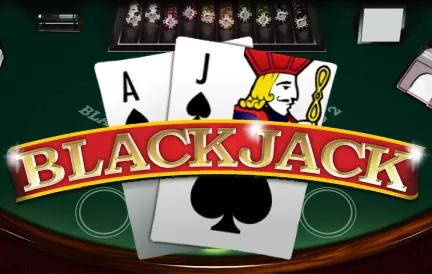Best Craps Strategy for Win
May 26th, 2025
24029
Want to beat the craps table like a pro? Whether you're a beginner or a seasoned player, mastering a solid craps strategy can dramatically increase your odds. This guide breaks down the best craps strategy options—from easy to advanced—so you can play smarter and stay in control of your bankroll.
Craps Odds and House Edge
Understanding the odds is the foundation of any good craps strategy. Craps is one of the most dynamic and exciting games in the online casino, but it’s also one of the most misunderstood. Knowing where the house has the edge helps you make better decisions.
Why Strategy Matters in Craps
Craps may look chaotic at first, but underneath the surface lies a numbers game. Every bet on the table has different odds and a different house edge. A player who knows how to exploit the better bets while avoiding the sucker ones can stretch their bankroll—and win more often.
A craps betting strategy doesn’t guarantee wins, but it does help you manage risk, stay in the game longer, and make statistically smart choices.
House Edge for Popular Bets
Let’s break down the house edge for the most common bets. These numbers are critical for choosing the best strategy for craps. The "house edge" is the mathematical advantage the casino has on any given bet. It's usually expressed as a percentage of the player's bet. For example, a 1.41% house edge means that, on average, the casino expects to keep $1.41 for every $100 wagered on that bet over time. A primary goal of any best craps strategy is to focus on bets with the lowest possible house edge.
| Bet Type | House Edge | Description |
|---|---|---|
| Pass Line | ~1.41% | Classic starter bet; wins if 7 or 11 on come-out roll |
| Don’t Pass | ~1.36% | Opposite of Pass Line; wins on 2 or 3, loses on 7 or 11 |
| Odds Bets | 0% | True odds, no house edge when added behind line bets |
| Proposition Bets | Up to 16.67% | One-roll bets with terrible odds for the player |
👉 Pro tip: The lower the house edge, the better the bet. Always combine flat bets with odds bets when possible for a more mathematical craps strategy.
- Clear strategies for all levels — beginner to advanced, including Pass Line + Odds, 3-Point Molly, and Iron Cross.
- Focus on low-house-edge bets helps manage risk and stretch bankroll.
- Money management tips included — unit betting, bankroll limits, win/loss thresholds.
- Online platforms allow practice with low table minimums and demo modes.
- Live dealer options provide social interaction while still applying strategic play.
- Advanced strategies allow layered betting and action across multiple points.
- Step-by-step breakdown of bet types, outcomes, and progression supports learning.
- Complex strategies like 3-Point Molly or Iron Cross may overwhelm beginners initially.
- Proposition bets have very high house edge — not suitable for strategic play.
- Fast-paced online RNG games can lead to rapid losses if bankroll is not managed.
- Emotional betting and chasing losses can ruin a strategy if discipline is ignored.
- Live tables have higher minimums, limiting flexibility for layered strategies.
- Advanced strategies require attention and tracking multiple points simultaneously.
- Aggressive systems (Power Pressing, Iron Cross) risk large losses on a single 7.
Best Craps Strategies for Beginners
If you're just starting out, keep it simple. The goal is to stay in the game while learning the flow of bets and building confidence. Each beginner craps strategy below is low-risk, easy to follow, and based on sound math.
Expert Tip: Focus on low-house-edge bets like Pass Line, Don’t Pass, Come, and Don’t Come.
Pass Line + Odds Strategy
This is the most basic craps strategy and a favorite among experienced players too. You start by placing a Pass Line bet. If a point is established, back it up with an odds bet. Why?
- The Pass Line bet has a low house edge (~1.41%)
- The Odds bet has 0% house edge, giving you a fair shot
✅ Example: Bet $10 on Pass Line. If the point is 6, place a $10 odds bet behind it. If the shooter hits 6 before rolling a 7, you win both.
🧠 Why it's effective: This combo is statistically strong and easy to manage. It’s often called the best strategy for craps for a reason.
Don’t Pass + Odds (Low Risk Approach)
Prefer to go against the crowd? This craps strategy for beginners involves betting on the Don’t Pass Line, where you win if the shooter rolls a 2 or 3 and lose on 7 or 11. Once a point is set, you lay odds behind it.
- Don’t Pass has a slightly better edge (~1.36%)
- Laying odds still gives a 0% house edge
⚠️ Heads-up: Betting "Don't Pass" may feel awkward in social settings since you're betting against the shooter.
🧠 Why it's smart: It’s a mathematically sound strategy with very low risk. Ideal for cautious players.
Place 6 and 8 Strategy (High Frequency Wins)
Numbers 6 and 8 hit more often than most others, giving you frequent payouts. Place bets directly on both.
- These bets have a house edge of just ~1.52%
- They hit more often than place bets on 5 or 9
✅ Example: Place $6 on 6 and $6 on 8. If either number hits before a 7, you win $7.
🧠 Why it works: A simple craps strategy that lets you collect smaller wins consistently. Great for learning pacing and table rhythm.
Avoiding Complex Bets Until You're Comfortable
Don’t jump into complicated bets like the Hardways or Horn until you understand the table. These might look exciting but often come with high house edges and unpredictable results.
📌 Stick to:
- Pass Line / Don’t Pass
- Come / Don’t Come
- Place Bets on 6 and 8
- Odds Bets
🧠 Why it matters: Overwhelming yourself early can lead to mistakes and fast losses. Master the craps basic strategy before branching out.
Intermediate Craps Strategies
Once you're familiar with the table and flow, it’s time to build on your base. These mid-level tactics offer more flexibility and better payouts—perfect for players ready to move beyond beginner play.
Come and Don’t Come Bet Systems
These bets work just like the Pass and Don’t Pass bets—but after the come-out roll. They allow you to have multiple points working simultaneously.
- Come Bet: Place it after a point is established. It acts like a mini Pass Line bet. Once a new point is assigned, you can add odds bets.
| Phase / Condition | Dice Roll Outcome | Come Bet Result | Next Step / Notes |
|---|---|---|---|
| Roll After Bet Placement | 7 or 11 | WIN | Bet is paid; new Come bet can be made. |
| Roll After Bet Placement | 2, 3, or 12 | LOSE | Bet is lost; new Come bet can be made. |
| Roll After Bet Placement | 4, 5, 6, 8, 9, or 10 | Bet moves to that number (becomes Come Point) | Player can take Odds on this Come Point. |
| After Come Point Established | Come Point number is rolled | WIN | Bet (and Odds) paid; Come bet is Off for new Come-Out unless requested. |
| After Come Point Established | 7 is rolled | LOSE | Bet (and Odds) lost. |
| After Come Point Established | Any other number (not Come Point or 7) | No change to specific Come Bet | Shooter rolls again. |
- Don’t Come: The opposite. You win if the next roll is 2 or 3, and lose on 7 or 11. If a point is established, you can lay odds against it.
| Phase / Condition | Dice Roll Outcome | Don't Come Bet Result | Next Step / Notes |
|---|---|---|---|
| Roll After Bet Placement | 2 or 3 | WIN | Bet is paid; new Don't Come bet can be made. |
| Roll After Bet Placement | 7 or 11 | LOSE | Bet is lost; new Don't Come bet can be made. |
| Roll After Bet Placement | 12 (sometimes 2) | PUSH (Bet returned, no win/loss) | New Don't Come bet can be made. Check table rules for push number. |
| Roll After Bet Placement | 4, 5, 6, 8, 9, or 10 | Bet moves behind that number (becomes Don't Come Point) | Player can lay Odds against this Don't Come Point. |
| After Don't Come Point Established | 7 is rolled (before Point) | WIN | Bet (and Odds) paid. |
| After Don't Come Point Established | Don't Come Point number is rolled | LOSE | Bet (and Odds) lost. |
| After Don't Come Point Established | Any other number (not Point or 7) | No change to specific Don't Come Bet | Shooter rolls again. |
✅ Why it's good:
- It allows consistent action
- You can spread your risk across several numbers
- Still leverages bets with a low house edge
🧠 Tip: Avoid using too many Don’t Come bets at once—it can reduce your payout potential even if it feels "safe."
3-Point Molly Strategy
This popular casino craps strategy builds on the Pass Line + Odds idea by adding two Come bets with odds behind each. You’ll have up to three numbers working at once, each backed by strong odds. It’s a balanced approach with multiple odds bets.
- Place Pass Line bet + odds
- Place first Come bet + odds when a point is made
- Do it again for a second Come bet + odds
🎯 Goal: Always have three number points working with max odds behind each. That’s the “3-point” in the name.
🧠 Why it's smart: You capitalize on good rolls without risking everything. It’s a winning craps strategy used by many pros.
Iron Cross Strategy
The Iron Cross aims to win on almost every number except 7. It covers most numbers but risks heavily on 7. You place:
- Field Bet (covers 2, 3, 4, 9, 10, 11, 12)
- Place bets on 5, 6, and 8
This way, any number but 7 pays out in some way.
| Bet Type | Numbers Covered |
|---|---|
| Field Bet | 2, 3, 4, 9, 10, 11, 12 |
| Place 5/6/8 | 5, 6, 8 |
⚠️ Caution: While it feels like you’re covering the board, this system loses the full amount when a 7 hits. That’s a big vulnerability.
🧠 Verdict: Great for action and excitement, but not ideal if you're trying to use a best mathematical craps strategy. Use with moderation.
Advanced Betting Systems in Craps
Once you've mastered the fundamentals, it's time to level up. These advanced craps strategies require confidence, timing, and strong bankroll management. They aim to boost payouts through smart bet layering and dynamic shifts.
Smart Tip: Use odds bets behind your Pass/Come bets—they have no house edge.
Power Pressing Strategy (Aggressive Payout Growth)
Power Pressing involves increasing your Place Bets aggressively after each win. It’s not for the faint of heart but offers the potential for massive payouts in hot rolls.
📌 How it works:
- Start with standard Place Bets (e.g., $6 on 6 and 8)
- When one hits, press the entire profit (or more) back onto the same number
- Keep pressing until you hit your desired win target—or a 7 ends the run
✅ Example: $6 on 6 pays $7 → press to $12 → pays $14 → press to $24 → and so on
🧠 Why it’s powerful: You build a snowball effect during long rolls. Just be prepared to lose your full press when 7 appears.
Regression Strategy
The Regression Strategy follows the principle: Start big, scale down after a win. The Regression system is the opposite of pressing. It starts with larger bets to catch an early win, then drops to smaller bets to lock in profits.
📌 How it works:
- Start with higher Place Bets (e.g., $18 on 6/8)
- After the first hit, regress to $6 or $12
- Continue collecting steady wins at lower risk
🧠 Why it's smart: Helps you preserve your gains and extend your session. A good craps strategy when volatility is high.
Combination Betting (Layering Bets for Coverage)
This strategy blends multiple bets for comprehensive board coverage and controlled risk.
✅ You might combine:
- Pass Line + Odds
- Come Bets
- Place Bets on 6/8
- Occasional Field Bets or Hop Bets for variety
🎯 Goal: Always have action on high-frequency numbers while layering safer and riskier plays to match the table rhythm.
🧠 Why advanced players use it: It allows full-table engagement and flexible responses to changing shooter performance. Just beware of overextending your bankroll.
Money Management in Craps
Even the best craps strategy chart can fail without solid money management. Craps is a fast-paced game where emotions run high. Knowing how to manage your bankroll is what separates casual players from long-term winners.
Set a Bankroll Limit Before Playing
Before rolling a single die, define how much you're willing to lose. This is your session bankroll—not your life savings.
✅ Tips:
- Break your total bankroll into sessions (e.g., $300 total = $100 per session)
- Never exceed your preset limit
- Avoid dipping into winnings from other casino games
🧠 Why it matters: Protects you from chasing losses and falling into emotional betting traps.
Use Units and Bet Sizing for Control
Instead of betting randomly, divide your bankroll into units—small, fixed amounts used to size your bets.
✅ Example:
- $200 bankroll
- 1 unit = $5
- Base bets = 1–2 units
- Strong confidence bets = 3–4 units
🎯 Goal: Keep your betting consistent and avoid reckless all-ins.
🧠 Key concept: Controlled betting = controlled emotions = more wins over time. This structure supports any easy craps strategy or advanced one.
When to Walk Away – Win or Lose
Knowing when to quit is as crucial as knowing when to bet.
- After a Win: Set a profit goal (e.g., 30–50% of your bankroll) and walk away when you hit it.
- After a Loss: Know your loss limit and respect it—never chase.
📌 Bonus tip: Step away after big emotional swings. A short break often resets your focus and saves your bankroll.
🧠 Why it's vital: No winning craps strategy works if you stay at the table too long. Discipline = profit.
What to Avoid in Craps
Knowing what not to do is just as important as knowing what to bet. Many players lose not because of bad luck, but because they fall into predictable traps. Here’s what to steer clear of—whether you’re using a simple craps strategy or an advanced one.
Proposition Bets with High House Edge
These are tempting one-roll bets in the center of the table—like “Any 7,” “Yo (11),” or “Hard 8.” They offer big payouts but come with house edges as high as 16.67%.
| Bet Type | House Edge |
|---|---|
| Any 7 | ~16.67% |
| Hard 4/10 | ~11.11% |
| Yo (11) | ~11.11% |
⚠️ These bets are flashy but mathematically terrible.
🧠 Pro tip: If you're aiming for a best mathematical craps strategy, skip these entirely. They're built for the house to win.
Betting Big Too Early
It’s easy to get overconfident after a few wins and start increasing your bets aggressively—too early.
📌 Why this backfires:
- Craps has streaks, both hot and cold
- Losing big early can destroy your bankroll before the game even starts
✅ Stick to your betting units and only scale up when you’ve built profit.
🧠 Discipline beats excitement. Every good craps table strategy is built on patience.
Emotional Betting and Chasing Losses
When players lose, they often bet more out of frustration—trying to “win it back.” This leads to irrational decisions and large, unnecessary losses.
🛑 Never do this:
- Doubling bets after a bad roll
- Jumping into high-risk bets out of anger
- Ignoring your original plan
✅ Do this instead:
- Take a short break
- Re-center on your bankroll and strategy
- Treat the game like a marathon, not a sprint
🧠 Mindset matters just as much as math. Emotional players feed the casino. Strategic players make it last—and sometimes walk away ahead.
Live vs. Online Craps Strategy
The fundamental mathematics and best craps strategy principles remain the same whether you're playing craps in a land-based casino or online. However, there are practical differences that can influence how you implement your strategy.
Speed Differences Impacting Bet Timing
Online craps—especially RNG (Random Number Generator) versions—are much faster than live table games. Each round takes seconds.
| Type of Craps Game | Speed & Strategy Impact |
|---|---|
| Live Craps | Slower pace with physical dice, manual bets, and dealer payouts. Ideal for thoughtful play and applying a complex craps table strategy. Allows time for decisions and social interaction. |
| Online Craps (RNG) | Very fast gameplay with instant rolls and quick bets. Suitable for high-volume play, but can lead to rapid losses if not managed. Automated features can help maintain control. |
| Online Live Dealer Craps | Combines live interaction and faster betting via digital interface. Faster than land-based but still offers a more immersive and human feel than RNG-only versions. |
📌 Why it matters:
- Less time to think = more impulse bets
- Easy to click through your bankroll too fast
✅ Strategy tip:
- Stick to basic craps strategy like Pass Line + Odds
- Take manual breaks every 10–15 rolls to reassess
🎲 In live craps, you get time between rolls to analyze the table and other players. That natural pacing supports advanced craps strategy execution.
Top Tip: Avoid high-risk proposition bets in the center—they carry the highest house edge.
Playing With or Without a Dealer (Live vs. RNG)
Live craps involves real people: dealers, shooters, and other players. Online, it’s just you and the software.
| Aspect | Live Craps | Online Craps |
|---|---|---|
| Human Interaction | High | None (RNG) |
| Dice Control Myth | Possible (maybe) | Not applicable |
| Social Pressure | Yes | No |
| Game Speed | Slower | Faster |
🧠 Strategic takeaway:
- In live play, don’t be pressured to place bets others cheer for (like Hardways or Field bets)
- In online play, take advantage of the solo environment to practice your craps basic strategy without judgmen
Table Minimums and Strategy Flexibility
Live Craps: Table minimums in land-based casinos can be relatively high, especially at peak times (e.g., $10, $15, $25 or more). This can impact the affordability of certain strategies, like the 3-Point Molly, which requires multiple bets. A higher minimum necessitates a larger bankroll for any given craps strategy.
Online Craps: Online casinos often feature much lower table minimums (e.g., $1 or even less). This makes the game more accessible to players with smaller bankrolls. Lower minimums provide greater flexibility for trying out different strategies, including those requiring several concurrent bets, without risking a large amount of money per roll. This can be particularly beneficial when learning a new simple craps strategy or experimenting with an advanced craps strategy.
Live casinos often have higher minimums—$10 or even $25 per bet. That limits your ability to layer or test strategies with a small bankroll.
✅ Online advantage:
- Minimums as low as $1
- Perfect for testing a beginner craps strategy like Place 6/8 or Don’t Pass + Odds
🧠 If you're building confidence or fine-tuning an advanced craps strategy, online is your safe space. But if you want to feel the energy and test your nerves, live is unbeatable.
Frequently Asked Questions About Craps Strategy
What’s the safest strategy in craps?
The safest strategy is the Don’t Pass + Odds combo. It has one of the lowest house edges (~1.36% for Don’t Pass, 0% for Odds) and minimizes risk by betting against the shooter. Though it may feel unpopular at the table, it’s mathematically sound and ideal for beginners focused on preservation.
Can betting systems beat the house edge?
No betting system can overcome the built-in house edge in the long run. Systems like Power Pressing or Regression can help manage bets and bankroll, but they don’t change the odds. Craps outcomes are random, so strategy helps reduce losses and improve win chances but never guarantees consistent profit.
Should I avoid betting on the 7?
Generally, yes. Betting on 7 (like in “Any 7” proposition bets) has a very high house edge (~16.67%) and is one of the riskiest plays. However, some aggressive strategies use 7 bets as part of layered betting, but it’s not recommended for beginners or those focused on good craps strategy.
Is it better to bet with or against the shooter?
It depends on your risk tolerance and style:
- With the shooter (Pass Line): Slightly higher house edge but more social and exciting.
- Against the shooter (Don’t Pass): Lower house edge and safer, but sometimes unpopular socially.
Both are valid and effective depending on your approach.
What is the best craps strategy?
The best craps strategy depends on your skill level and bankroll. For beginners, the Pass Line + Odds and Don’t Pass + Odds strategies provide solid odds with simplicity. Advanced players often combine 3-Point Molly or Power Pressing with tight money management for higher potential wins. Ultimately, discipline and bankroll control are as important as any betting system.
Related posts











